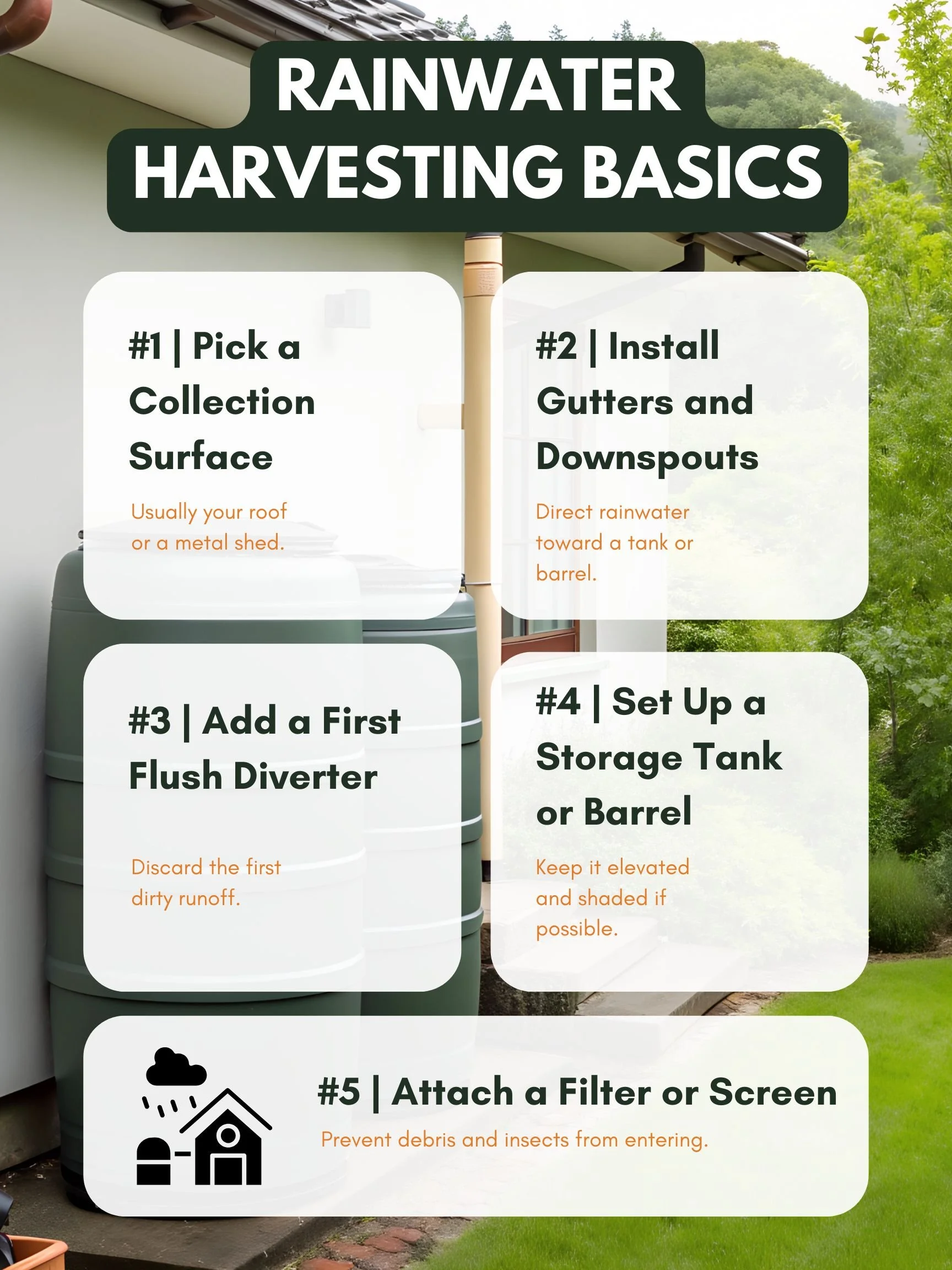Rainwater Harvesting Basics
Collecting rainwater is one of the most practical and sustainable ways to use the resources that nature provides. For rural landowners and off-grid families, it offers a simple way to become more self-reliant while cutting down on monthly expenses. With the right setup, rainwater can be stored and used for gardens, cleaning, livestock, or even filtered for household use. Many Utah property owners choose this method to prepare for dry seasons, reduce dependence on city water, and live in a more sustainable way.
Rainwater harvesting might sound complicated, but it is actually straightforward once you understand how the system works. By planning ahead and installing a few basic components, you can collect and store hundreds of gallons of clean, usable water each year.
How Rainwater Harvesting Works
Rainwater harvesting involves collecting and storing rain that falls on a solid surface, such as a roof or metal shed. Instead of letting the water soak into the ground or wash away, the system captures it for later use. The process can be as simple or as advanced as you want it to be, depending on your property’s needs and your goals for water use.
A basic setup usually includes the following components:
Catchment surface: This is the surface where rain first lands, typically a roof or another clean, solid area.
Gutters and downspouts: These direct water from the roof into a storage container.
First flush diverter: A small mechanism that lets the first few gallons of water, which may contain dirt and debris, flow away before filling your tank.
Storage container: This could be a barrel, cistern, or tank that holds the collected rainwater.
Filtration system: Optional filters or screens can be used to keep water clear of debris, and advanced systems can include UV treatment for household use.
The overall goal is to guide water from the sky to a clean, secure storage system that can provide water long after a rainfall ends.
Choosing the Right System for Your Property
The best rainwater system for your property depends on how much rainfall you get, what you plan to use the water for, and how much space you have available. In Utah, rainfall can vary greatly depending on the region, so it’s important to design a system that suits your environment. A small setup might be perfect for garden irrigation, while a larger one can supply off-grid living needs for months.
Here are a few key factors to consider before getting started:
Roof type and material: Metal roofs tend to collect cleaner water than asphalt shingles and are easier to maintain.
Storage capacity: Start with what you need, then expand as you learn your water habits. A few barrels may be enough for light garden use, while larger tanks are better for livestock or home supply.
Tank placement: Keep the tank near a downspout, slightly elevated for gravity flow, and out of direct sunlight to reduce algae growth.
Local guidelines: Some areas in Utah have specific rules about collecting and using rainwater, so it’s always worth checking local ordinances first.
With thoughtful planning, even a simple setup can make a noticeable difference in your water independence and sustainability.
Maintenance and Water Quality
Keeping your rainwater system clean is essential for both safety and performance. Over time, leaves, dust, and sediment can collect in the gutters or tank, which can lower water quality and cause blockages. Regular maintenance helps your system last longer and ensures the water remains clean enough for use.
Follow these simple steps to maintain your setup:
Clean gutters and filters every few months, especially after storms.
Drain and rinse storage containers once a year to remove sediment buildup.
Inspect seals and pipes to catch leaks early and prevent wasted water.
Use screens or mesh filters to block insects, dirt, and other debris from entering the tank.
If your water will be used for indoor purposes, consider adding a filter or UV sterilizer. This makes sure it stays safe for washing, cooking, or even drinking if the system is properly maintained.
Benefits of Rainwater Harvesting
The advantages of collecting rainwater go far beyond saving on utility bills. It supports sustainable land use, helps protect local ecosystems, and increases your self-sufficiency. For anyone living on rural or off-grid property, it’s one of the easiest ways to use what your land naturally provides.
Some of the main benefits include:
Water conservation: Reduces strain on municipal systems and preserves groundwater.
Self-sufficiency: Provides a consistent source for irrigation, livestock, or emergencies.
Environmental benefits: Minimizes erosion and runoff while supporting healthy soil.
Affordability: Most systems are low-cost, easy to maintain, and last for years.
Each drop you collect is water you don’t have to buy or pump, making it a reliable step toward sustainability and preparedness.
Final Thoughts
Rainwater harvesting is a rewarding project that allows landowners to become more independent and environmentally conscious. Whether you’re watering a garden, caring for animals, or preparing for off-grid living, collecting rainwater gives you control over one of your most valuable resources. With simple equipment and regular upkeep, you can make the most of every rainfall and ensure that your land stays productive and self-sufficient.
For Utah landowners, it’s more than just a water-saving technique, it’s a lifestyle choice that brings you closer to the land and helps you make the most of what it offers naturally.



